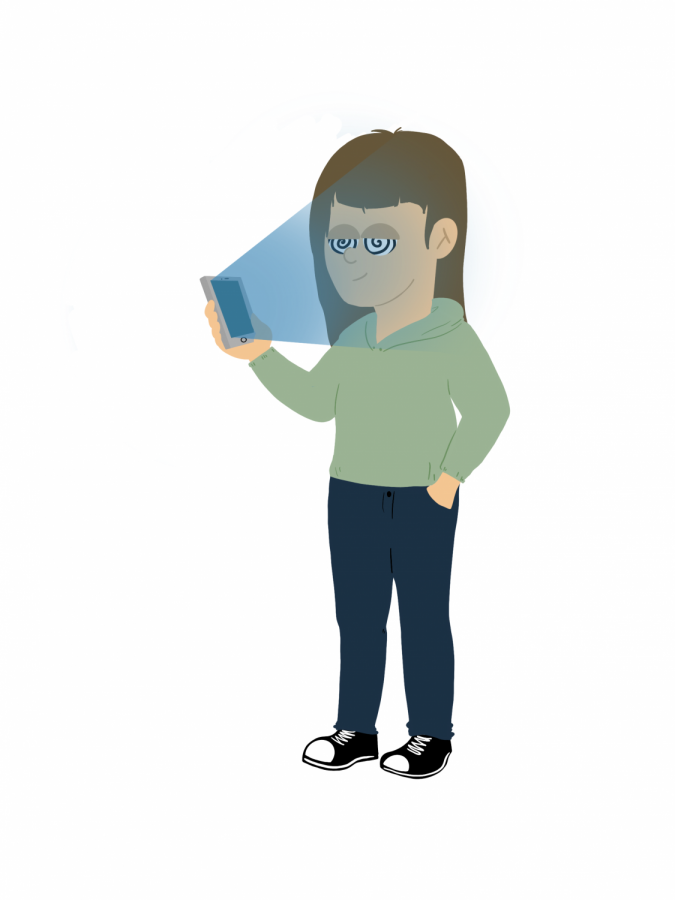Due to the coronavirus, many people have had to change their homes into spaces for learning and working.
One of the downsides of this shift is the negative impacts of the increased exposure to blue light created by electronic screens.
The largest source of blue light is sunlight. Even though we get most of our exposure from the sun, the long-term effects of blue light that comes from closer to eyes is a growing concern among eye doctors and health care professionals.
According to the UC Davis Health Newsroom, overexposure to blue light could damage retinal cells and cause vision problems such as age-related macular degeneration. This eye disease affects the center image of your vision and can cause blurred vision or loss of sight.
Much more research is needed to determine how much blue light is too much, but eye doctors and health care professionals are still worried about the risk of macular degeneration.
Computer Vision Syndrome or Digital Eye Strain is defined as a group of eye and vision-related problems that result from prolonged computer, tablet, e-reader and cell phone use.
Common symptoms of CVS are eye strain, headaches, blurred vision and dry eyes. However, these symptoms could also be caused by other variables such as glare on a screen or undiagnosed vision problems.
“Luckily, I am not experiencing symptoms from using my computer,” Jayla Lee, Journalism and Media Studies lecturer, said. “As soon as we transitioned to virtual classes, I strived to create an ergonomic workspace at home.”
Many symptoms will go away when stopping the use of digital devices, but if they continue, it’s best to seek help or the symptoms could worsen.
“I’ve only been watching one episode of a Netflix show each day and listening to podcasts instead,” interdisciplinary studies junior Sophia Burkert said.
Lee has been wearing blue light protection glasses for a while and said they have stopped her from getting headaches after prolonged computer use. Burkert also wears blue light glasses when using screens for an elongated period of time.
Although Lee and Burkert aren’t alone in wearing blue light glasses, researchers and professionals disagree on their effectiveness.
“After a day of teaching, I have been intentional about pursuing hobbies that do not involve screen time,” Lee said. “I recently started knitting, and I’m making a blanket. It’s been fun, a great outlet to relax, and I chose colors that spark joy for me during the process. It may sound silly – but I am striving to embrace the small joys right now.”
Aside from vision damage, being exposed to blue light at night can stunt melatonin levels which can alter sleep. Being exposed to blue light before bed can make it take someone longer to fall asleep.
However, according to All About Vision, not all blue light is bad for you. Blue light, as well as other “high-energy visible light,” can boost alertness, help memory, elevate mood and help regulate sleep cycles.
The important step when dealing with blue light is to get a healthy balance in your day and to regulate your use. Timing can be important for sleep also.
To help reduce exposure to blue light and Computer Vision Syndrome, try these tips:
- Have your computer screen 15 to 20 degrees below your eye level
- Try to position your computer to have as little glare as possible
- After two hours of continuous computer use, rest your eyes for 15 minutes
- Use the 20-20-20 rule: every 20 minutes, view something 20 feet away for 20 seconds
- Blink frequently to avoid dry eye
- Avoid looking at screens for two to three hours before you go to sleep











